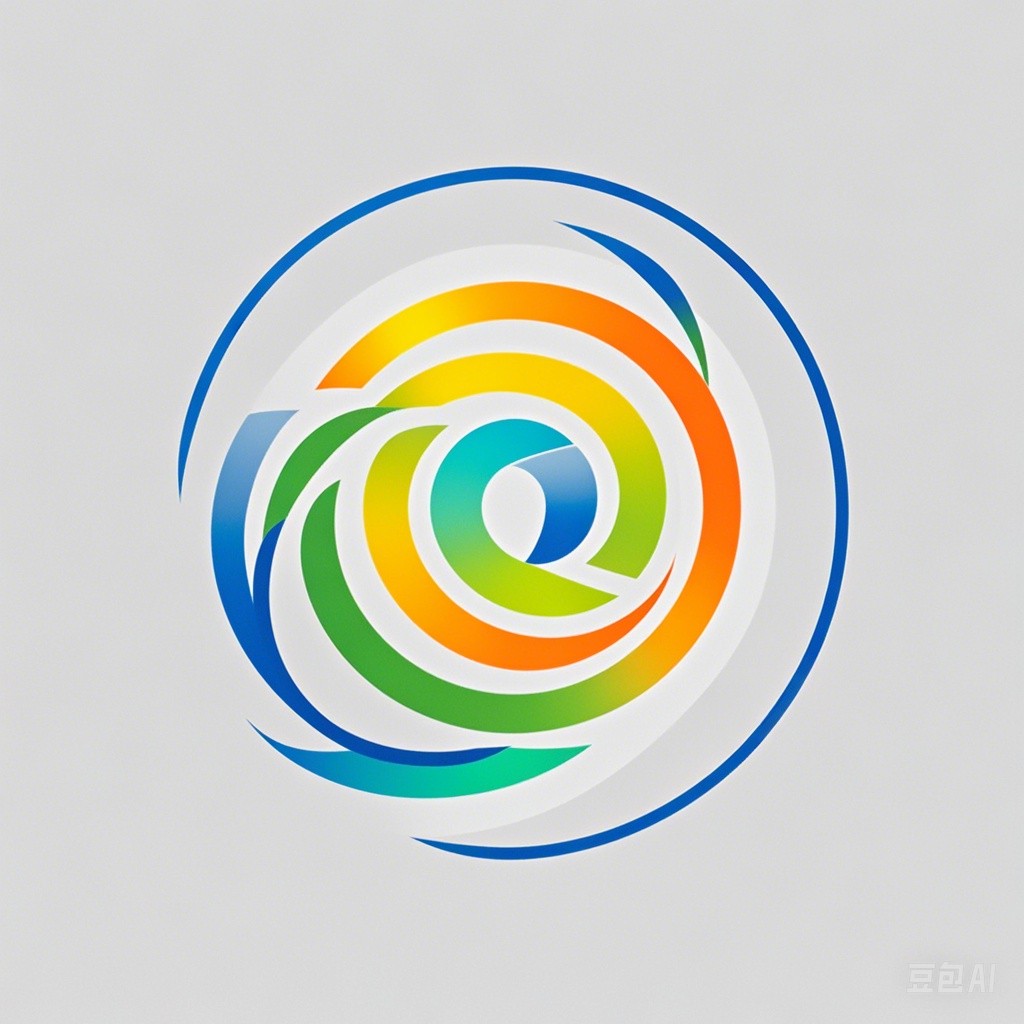随着科技的发展和全球竞争的加剧,创新性发展已成为推动各国经济增长和社会进步的关键因素。本文将深入探讨10大突破路径,旨在帮助读者了解如何在传统领域进行颠覆式创新,并探索未来的无限可能。
一、技术创新
1.1 人工智能
人工智能(AI)正在改变各行各业,通过机器学习和深度学习,AI能够处理大量数据,提供智能决策支持。
# 示例:使用TensorFlow构建简单的神经网络
import tensorflow as tf
model = tf.keras.models.Sequential([
tf.keras.layers.Dense(10, activation='relu', input_shape=(100,)),
tf.keras.layers.Dense(1, activation='sigmoid')
])
model.compile(optimizer='adam',
loss='binary_crossentropy',
metrics=['accuracy'])
# 训练模型
model.fit(x_train, y_train, epochs=10)
1.2 量子计算
量子计算利用量子位进行信息处理,具有超越传统计算机的计算能力。
# 示例:使用Qiskit进行量子计算
from qiskit import QuantumCircuit, Aer, execute
# 构建量子电路
circuit = QuantumCircuit(2)
circuit.h(0)
circuit.cx(0, 1)
# 执行电路
backend = Aer.get_backend('qasm_simulator')
job = execute(circuit, backend)
result = job.result()
print(result.get_counts(circuit))
二、产业升级
2.1 智能制造
智能制造通过物联网(IoT)和大数据分析,提高生产效率和产品质量。
# 示例:使用Python实现简单的IoT数据收集
import random
import time
def collect_data():
data = {'temperature': random.uniform(20, 30), 'humidity': random.uniform(30, 50)}
print(data)
time.sleep(1)
while True:
collect_data()
2.2 绿色能源
绿色能源技术的发展有助于减少对化石燃料的依赖,降低环境污染。
# 示例:使用Python计算太阳能电池板的能量输出
import numpy as np
def solar_energy_output(angle, efficiency):
power_output = efficiency * np.sin(np.radians(angle))
return power_output
# 计算不同角度下的能量输出
angles = np.linspace(0, 90, 10)
efficiency = 0.15
outputs = [solar_energy_output(angle, efficiency) for angle in angles]
print(outputs)
三、商业模式创新
3.1 分享经济
分享经济通过平台连接供需双方,实现资源的高效利用。
# 示例:使用Python实现简单的分享经济平台
class SharingEconomyPlatform:
def __init__(self):
self.resources = []
def add_resource(self, resource):
self.resources.append(resource)
def find_resource(self, user):
for resource in self.resources:
if resource.is_available():
return resource
return None
class Resource:
def __init__(self, name):
self.name = name
self.available = True
def use_resource(self):
self.available = False
def is_available(self):
return self.available
# 使用平台
platform = SharingEconomyPlatform()
platform.add_resource(Resource("Bike"))
platform.add_resource(Resource("Car"))
user = "Alice"
resource = platform.find_resource(user)
if resource:
resource.use_resource()
print(f"{user} has rented {resource.name}.")
else:
print(f"No resources available for {user}.")
3.2 消费者驱动的产品开发
通过收集消费者反馈,快速迭代产品,满足市场需求。
# 示例:使用Python进行用户反馈分析
import pandas as pd
def analyze_feedback(feedback):
data = pd.read_csv(feedback)
sentiment_score = data['feedback'].apply(lambda x: 1 if 'positive' in x.lower() else -1).sum()
return sentiment_score
# 假设有一个用户反馈文件
feedback_file = "user_feedback.csv"
sentiment_score = analyze_feedback(feedback_file)
print(f"Sentiment score: {sentiment_score}")
四、社会创新
4.1 教育技术
教育技术通过在线学习平台和虚拟现实(VR)等工具,提供更个性化的学习体验。
# 示例:使用Python构建简单的在线学习平台
class OnlineLearningPlatform:
def __init__(self):
self.courses = []
def add_course(self, course):
self.courses.append(course)
def enroll_course(self, user, course_name):
course = next((c for c in self.courses if c.name == course_name), None)
if course:
print(f"{user} has enrolled in {course.name}.")
else:
print(f"No course found with the name {course_name}.")
class Course:
def __init__(self, name):
self.name = name
# 使用平台
platform = OnlineLearningPlatform()
platform.add_course(Course("Python Programming"))
platform.add_course(Course("Data Science"))
user = "Bob"
platform.enroll_course(user, "Python Programming")
4.2 公共卫生
公共卫生领域的创新有助于应对全球健康挑战,提高公众生活质量。
# 示例:使用Python进行公共卫生数据可视化
import matplotlib.pyplot as plt
def visualize_public_health_data(data):
plt.figure(figsize=(10, 5))
plt.plot(data['year'], data['cases'], marker='o')
plt.xlabel('Year')
plt.ylabel('Cases')
plt.title('Public Health Data')
plt.show()
# 假设有一个公共卫生数据文件
public_health_data = {'year': [2010, 2015, 2020], 'cases': [1000, 2000, 3000]}
visualize_public_health_data(public_health_data)
五、可持续性发展
5.1 环保技术
环保技术旨在减少对环境的影响,推动绿色产业发展。
# 示例:使用Python进行碳排放计算
def calculate_co2_emissions(co2_per_unit, units):
return co2_per_unit * units
# 计算碳排放
co2_per_unit = 0.0002 # 每单位产出的碳排放量
units_produced = 100000 # 单位产量
emissions = calculate_co2_emissions(co2_per_unit, units_produced)
print(f"Total CO2 emissions: {emissions} tons")
5.2 可再生能源
可再生能源技术的发展有助于减少对化石燃料的依赖,降低温室气体排放。
# 示例:使用Python进行太阳能光伏发电量计算
def calculate_solar_energy_output(area, efficiency, irradiance):
power_output = efficiency * area * irradiance
return power_output
# 计算太阳能光伏发电量
area = 100 # 平方米
efficiency = 0.15 # 效率
irradiance = 1000 # 每平方米的太阳辐射量(瓦特/平方米)
output = calculate_solar_energy_output(area, efficiency, irradiance)
print(f"Expected solar energy output: {output} W")
六、健康医疗
6.1 个性化医疗
个性化医疗通过基因检测和大数据分析,为患者提供定制化的治疗方案。
# 示例:使用Python进行基因数据分析
def analyze_genetic_data(genetic_data):
mutations = genetic_data['mutations'].unique()
mutation_counts = genetic_data['mutations'].value_counts()
return mutations, mutation_counts
# 假设有一个基因数据文件
genetic_data = {'mutations': ['mutation1', 'mutation2', 'mutation2', 'mutation3']}
mutations, mutation_counts = analyze_genetic_data(genetic_data)
print(f"Mutations: {mutations}")
print(f"Mutation counts: {mutation_counts}")
6.2 远程医疗
远程医疗通过视频会议和移动应用,为患者提供便捷的医疗服务。
# 示例:使用Python实现简单的远程医疗平台
class TelemedicinePlatform:
def __init__(self):
self.doctors = []
def add_doctor(self, doctor):
self.doctors.append(doctor)
def schedule_appointment(self, patient, doctor_name):
doctor = next((d for d in self.doctors if d.name == doctor_name), None)
if doctor:
print(f"{patient} has scheduled an appointment with {doctor.name}.")
else:
print(f"No doctor found with the name {doctor_name}.")
class Doctor:
def __init__(self, name):
self.name = name
# 使用平台
platform = TelemedicinePlatform()
platform.add_doctor(Doctor("Dr. Smith"))
platform.add_doctor(Doctor("Dr. Johnson"))
patient = "Charlie"
platform.schedule_appointment(patient, "Dr. Smith")
七、金融科技
7.1 区块链技术
区块链技术通过加密和分布式账本,提供安全、透明的金融交易。
# 示例:使用Python实现简单的区块链
import hashlib
import json
class Block:
def __init__(self, index, transactions, timestamp, previous_hash):
self.index = index
self.transactions = transactions
self.timestamp = timestamp
self.previous_hash = previous_hash
self.hash = self.compute_hash()
def compute_hash(self):
block_string = json.dumps(self.__dict__, sort_keys=True)
return hashlib.sha256(block_string.encode()).hexdigest()
class Blockchain:
def __init__(self):
self.unconfirmed_transactions = []
self.chain = []
self.create_genesis_block()
def create_genesis_block(self):
genesis_block = Block(0, [], datetime.now(), "0")
genesis_block.hash = genesis_block.compute_hash()
self.chain.append(genesis_block)
def add_new_transaction(self, transaction):
self.unconfirmed_transactions.append(transaction)
def mine(self):
if not self.unconfirmed_transactions:
return False
last_block = self.chain[-1]
new_block = Block(index=last_block.index + 1,
transactions=self.unconfirmed_transactions,
timestamp=datetime.now(),
previous_hash=last_block.hash)
new_block.hash = new_block.compute_hash()
self.chain.append(new_block)
self.unconfirmed_transactions = []
return new_block.hash
# 使用区块链
blockchain = Blockchain()
blockchain.add_new_transaction({'sender': 'Alice', 'receiver': 'Bob', 'amount': 10})
blockchain.mine()
7.2 人工智能在金融中的应用
人工智能在金融领域的应用,如风险管理、客户服务和自动化交易。
# 示例:使用Python进行简单的风险管理
def risk_management(assets, risk_threshold):
risk_scores = {}
for asset in assets:
risk_scores[asset] = asset['value'] / risk_threshold
return risk_scores
# 假设有一个资产数据文件
assets = [{'name': 'Asset1', 'value': 1000}, {'name': 'Asset2', 'value': 2000}]
risk_threshold = 10000
risk_scores = risk_management(assets, risk_threshold)
print(f"Risk scores: {risk_scores}")
八、交通出行
8.1 自动驾驶技术
自动驾驶技术通过传感器和算法,实现汽车的自主导航和行驶。
# 示例:使用Python实现简单的自动驾驶算法
import numpy as np
def autonomous_driving(sensor_data, speed_limit):
speed = sensor_data['speed']
distance_to_obstacle = sensor_data['distance_to_obstacle']
if speed > speed_limit or distance_to_obstacle < 5:
return "Slow down"
else:
return "Keep driving"
# 示例数据
sensor_data = {'speed': 50, 'distance_to_obstacle': 10}
speed_limit = 60
action = autonomous_driving(sensor_data, speed_limit)
print(f"Action: {action}")
8.2 共享出行
共享出行通过共享单车、共享汽车等模式,提高出行效率,减少交通拥堵。
# 示例:使用Python实现简单的共享出行平台
class SharedTransportPlatform:
def __init__(self):
self.vehicles = []
def add_vehicle(self, vehicle):
self.vehicles.append(vehicle)
def rent_vehicle(self, user, vehicle_name):
vehicle = next((v for v in self.vehicles if v.name == vehicle_name), None)
if vehicle:
vehicle.rented = True
print(f"{user} has rented {vehicle.name}.")
else:
print(f"No vehicle found with the name {vehicle_name}.")
class Vehicle:
def __init__(self, name):
self.name = name
self.rented = False
# 使用平台
platform = SharedTransportPlatform()
platform.add_vehicle(Vehicle("Bike"))
platform.add_vehicle(Vehicle("Car"))
user = "David"
platform.rent_vehicle(user, "Bike")
九、能源领域
9.1 核聚变能源
核聚变能源通过模拟太阳的核聚变过程,提供几乎无限的清洁能源。
# 示例:使用Python进行核聚变反应计算
def calculate_nuclear_fusion_energy(mass):
energy = mass * 931.5 # 每摩尔质量的能量(百万电子伏特)
return energy
# 计算核聚变能量
mass = 0.1 # 摩尔质量
energy = calculate_nuclear_fusion_energy(mass)
print(f"Energy released: {energy} MeV")
9.2 可再生能源存储
可再生能源存储技术有助于平衡能源供需,提高能源系统的稳定性。
# 示例:使用Python进行电池储能系统计算
def calculate_battery_storage(capacity, efficiency, energy_demand):
energy Stored = capacity * efficiency
if energy Stored >= energy_demand:
return True
else:
return False
# 假设有一个电池储能系统
capacity = 100 # 千瓦时
efficiency = 0.8 # 效率
energy_demand = 80 # 千瓦时
is_storage_sufficient = calculate_battery_storage(capacity, efficiency, energy_demand)
print(f"Is storage sufficient? {is_storage_sufficient}")
十、文化娱乐
10.1 虚拟现实
虚拟现实(VR)技术为用户提供沉浸式的娱乐体验,改变传统娱乐方式。
# 示例:使用Python实现简单的VR应用
from pyglet import window, gl
def setup_vr_window():
window = window.Window(width=800, height=600)
gl.glClearColor(0, 0, 0, 1.0)
@window.event
def on_draw():
gl.glClear(gl.GL_COLOR_BUFFER_BIT)
gl.glBegin(gl.GL_TRIANGLES)
gl.glColor3f(1.0, 0.0, 0.0)
gl.glVertex2f(-0.5, -0.5)
gl.glColor3f(0.0, 1.0, 0.0)
gl.glVertex2f(0.0, 0.5)
gl.glColor3f(0.0, 0.0, 1.0)
gl.glVertex2f(0.5, -0.5)
gl.glEnd()
window.swap_buffers()
window.set_visible(True)
setup_vr_window()
10.2 数字艺术
数字艺术通过计算机技术和新媒体,创作出独特的艺术作品,丰富人们的精神世界。
# 示例:使用Python进行数字艺术创作
import matplotlib.pyplot as plt
def create_digital_art():
fig, ax = plt.subplots()
ax.set_xlim(0, 10)
ax.set_ylim(0, 10)
ax.plot([1, 2, 3, 4], [1, 4, 9, 16], label='Function f(x)')
ax.axhline(0, color='black',linewidth=0.5)
ax.axvline(0, color='black',linewidth=0.5)
plt.xlabel('x')
plt.ylabel('f(x)')
plt.title('Digital Art')
plt.legend()
plt.show()
create_digital_art()
通过以上10大突破路径,我们可以看到,创新性发展不仅需要技术创新,还需要产业升级、商业模式创新、社会创新、可持续性发展、健康医疗、金融科技、交通出行、能源领域和文化娱乐等多方面的综合推动。只有不断探索和突破,我们才能在未来的世界中立足,实现可持续发展。
